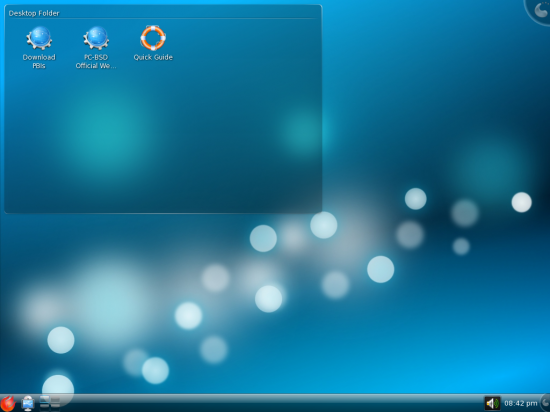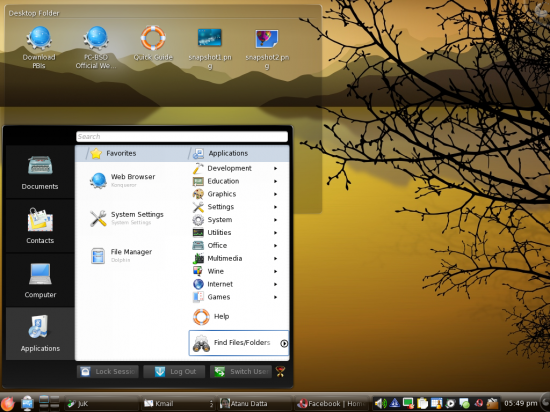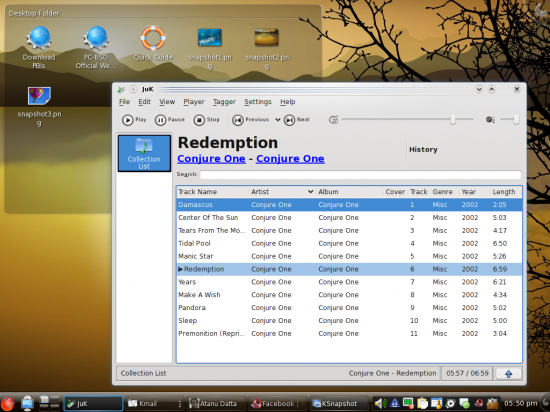Just about a week back, I asked my father, “Why don’t you use Linux?” He replied with another question: “Why do people use Windows?”
As much as we may rave about it, laymen are just not enamoured by or convinced about Linux. We know that the days when Linux meant staring at a shell prompt and typing out cryptic commands, are long gone. Nowadays, most Ubuntu users don’t know that they are using GNU/Linux. They find it much more aesthetic, usable and logical than Windows. They have no idea that under the skin of such an operating system is a heart so powerful and complex that it takes nothing less than a power-cut to bring the system down. No more black screens, no prompts, an integrated and tightly knit GUI… ladies and gentlemen, the future of UNIX computing is here.
Let’s just forget Linux for a bit and, instead, face the ultimate truth. We are using a UNIX-like operating system. Yes, that’s right. UNIX was born in AT&T’s Bell Laboratories as a system written in Assembler for an ageing PDP-7 system. After the complex OS got too difficult to maintain in Assembler, the C language was created and UNIX was re-written in C. By about 1977, Berkeley Software Distribution (that’s BSD) started as a set of add-on software to Sixth Edition UNIX. Ultimately, by the time BSD4.4 came out, it had forked off from AT&T’s UNIX and was on its own. However, 4.4 was the last BSD version, because BSD had run into licensing and patent issues. After the legal battle, 4.4 came out in 2 versions—4.4 Encumbered, with a lot of AT&T and some proprietary code, and 4.4Lite, with only the Berkeley code.
4.4 Lite had huge chunks of the kernel missing—critical chunks, which made the kernel unusable. Two major projects started off, and each took the 4.4Lite code and started developing on their own. We know of them as NetBSD and FreeBSD. The former specialises in security, while the latter boasts of stability. Around the same time, Andrew Tannenbaum developed MINIX, a 16-bit UNIX clone to teach students operating system design. MINIX had nothing to do with UNIX sources. And, watching Andrew, Linus Torvalds came up with a 32-bit clone, called Freax. Freax did not have anything to do with either UNIX or MINIX sources. And after Freax was complete, the manager of Linus’s FTP site changed the name to Linux, because he didn’t like Freax. Thus we had five UNIX and UNIX-like operating system kernels: UNIX itself, NetBSD, FreeBSD, MINIX and Linux.
Bang Bang Bang—PC-BSD is here
Mac users love their OS, and Mac OS X is built on part of the FreeBSD 5 kernel and that entire userland. So some guy called Kris Moore took apart FreeBSD 6.0 (at that time it was the latest) and built his own OS around it. Version 1.0 was released on April 26, 2006. The OS aimed to be the most Mac-ish, using a BSD kernel, a highly customised version of KDE 3, and a revolutionary… ahem, Mac-like package management system.
Cut to the present: I’m sitting down in front of Mozilla Firefox 3.0.8, running on PC-BSD 7.1 Galileo Edition, based on the FreeBSD 7.2 pre-release kernel, and running KDE 4.2.2. Savvy?
Yeah! PC-BSD is refreshing after the bores and chores of Linux. It comes on a plastic platter 15 centimetres in diameter, and to get it started, you install it. To do that, you must pluck out some sort of a tray from the front of your PC, put the platter silver side down on that tray, and close the tray. Then restart your computer, and follow the steps on that huge box that contains installation instructions.
| Install experience |
|---|
Installing PC-BSD from that round platter is a no-brainer. But, of course, you can’t really live without a brain. But then again…
|
After the actual installation is complete, the first boot needs some attention. After X starts up, a pop-up comes along, telling me to supply some information about my graphics card. I have an NVIDIA GeForce 7100/nForce 630i, and I don’t like what I see. The string “vesa” is staring at me when I look at the field specifying the video driver. Not good. So I open up the drop down menu, and see three NVIDIA drivers—version 69, for legacy cards; version 173, the stable drivers; and version 180, the current drivers. I select version 180, and X re-starts. WhoHoo! I’m finally staring at KDE 4.2.2. At this moment on, there really is no difference between PC-BSD and Kubuntu. Well, save one: you don’t have Apt here.

The software set is pretty standard, bundling in the entire KDE 4.2.2 application set. At installation time, you will notice that a lot of stuff like OpenOffice.org, Firefox and Amarok were optional. I did install all of them. Amarok and OOo versions come up as shockers: 1.4 and 2.4, respectively. Everything else is fine. And the moment it booted up (it was five days from the release date), an update for each and every optional package was available. A 500MB download, all in all. OOo 3.0.1, Amarok 2.2, what else? Those guys could have populated the DVD with those instead of legacy versions.
Take it for a ride
I did that for starters. There were no disappointments, save some hiccups. The first thing I did was remove the normal launcher and enable Lancelot. An annoying problem was that while log-out works, hovering the mouse on ‘Switch Users’ brings me a configure GDM menu item.

I next tested out the bundled version of Wine 1. I browsed away with Dolphin and double-clicked on the installation file of Foobar2000, a free (not libre) music player for Windows. It installed fine, but would just not play any audio. WinCfg didn’t help, and running Wine from Konsole resulted in a segfault. Bye, bye, Wine! By the way, it’s supposed to run Linux binaries natively, but I didn’t check.
Broadband connections in Bridged Mode (that is, the dial-up-like mode) would not work, so I ended up hacking my modem and setting it to ‘always-on’ mode. Now the Internet rocks! It’s fast, and it’s quite stable.
Speaking of speed and stability, PC-BSD is by far the most responsive system ever to run on my PC. It’s stable as well. Save for the Wine segfaults, nothing has gone wrong yet. 3D effects are enabled by default and they rock. MP3s play by default, as do H.264 video. By the way, PC-BSD is not for FOSS purists, because starting with the BSD licence itself (which makes it ‘almost public domain’, save reserving a copyright), it includes all sorts of encumbered drivers such as NVIDIA’s, and codecs such as MP3 and H.264. By the way, Flash is included as well.
The nitty gritty
PC-BSD wouldn’t install on logical drives, but the BSD people say that it should install on an extended partition, preferring their own slices and disk labels rather than Windows’s LDs. Coming to partitioning, I must share my installation choices with you. I booted up the installer with option 8, or with support for Sun’s Zetabyte File System (ZFS). I selected this in the partitioning screen, and the installer barked at me: “ZFS is for 64-bit systems with more than 4 GB of RAM.” I have two. Who cares about warnings? I ignored it and, ooh la la! ZFS is literally a rocket at managing the storage of my files!
PC-BSD is geared towards newbies, but when they see the black screen with three lines of text after starting their PC (the boot-loader), they may faint. If they don’t, after pressing the desired F-key for FreeBSD (yes, it’s not PC-BSD), they’ll come to a screen with pretty nice choices that are also baffling. So what should they do? Just hit Enter, guys—the default choice is fine. After that, don’t try to make any sense of those meaningless lines of text flashing by. And don’t enter your login name when prompted; leave it as it is. KDE will start automatically.
Just how easy is it to crash this stuff?
It’s actually very easy to crash it, but it takes a while to figure that out. Actually, I did it accidentally. I was just casually browsing the directory tree, and chanced upon a boot-splash image. I knew there must be a way of enabling it. Turned out there was: four commented lines in /boot/loader.conf. I uncommented that stuff and rebooted the PC. That was the last time I saw the desktop.
Of course, you could use the classic rm -rf /. The Avada Kedavra command!
Back to the stable: The Push Button Installer
That’s our package manager. It’s called PBI, and it stands for Push-Button Installer. There’s no automated download-and-install system here, it’s all a-la Mac. In Macs, you download a DMG file. Here, you download a PBI file. The PBI file is self-contained, has all the dependencies packed in, and installs to its own prefix, under the /Programs directory. Double click the PBI file, and after entering the root password, the first of the installer screens appear.

Here I needed to install Last.fm’s Qt4 radio app. To start with, I headed to pbidir.com. Then I clicked on Multimedia, and then Last.fm. Select 32bit on the first page, then a mirror from the list (I use isc.org) on the next, and then finally click on the download link on the third page. Brew some coffee while this 14MB file is being downloaded.
After downloading is complete, double-click the file. It’s nothing but ‘click-next’. You’ll be done in a jiffy. Menu entries will be created in Lancelot and the launcher, and an icon will appear on the desktop. We are done! Way too simple. Of course, you might need to get something other than Last.fm. PBIdir is the official PBI repo, and you’ll get everything from it. The version of PC-BSD included with LFY is 32-bit. So always get the 32-bit version.
Well, what about that cup of coffee? Have it while you channel some instrumental music from Last.fm over your 7.1 channel speaker system. You deserve it.
Last thoughts
You guys know that I suffer from Distromania, and I have already left PC-BSD in search of a better operating system. But to me, PC-BSD left a deep impression for being a stable, logical and easy-to-use operating system based on a rock solid kernel that’s impossible to crash (unless you tweak your loader.conf or run the Avada Kedavra command). It’s fast, responsive, and has a host of software available for it. Everything works out of the box, with minimal configuration, and no googling or trouble-shooting.
NVIDIA drivers are available out of the box, MP3s play, as do FLV movies. Everything looks sleek, and works together. I’ll let out a little secret. I’m actually on assignment here. I was told to review Zenwalk, but I just couldn’t even boot it. X refused to start with vesa drivers, broadband went haywire, LILO ruined my bootsector and basically made my life hell for the three days I struggled with it. At the end of it, I put my hands up and surrendered, and they gave me PC-BSD. PC-BSD is the exact opposite of Zenwalk. Everything works, and works harmoniously. After you install this OS, you’ll love your brand new PC!











































































